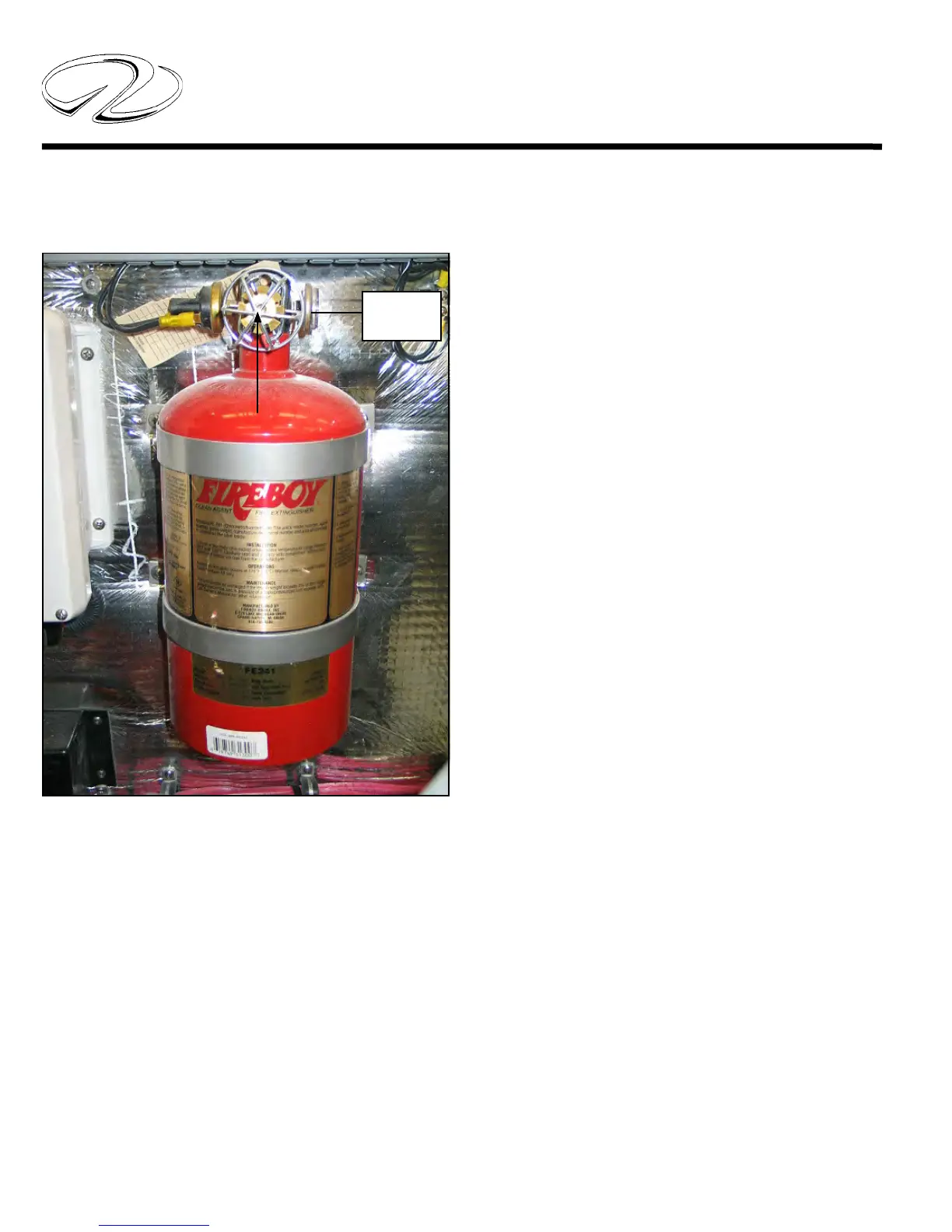18
Chapter 7
FIRE EXTINGUISHER AUTOMATIC
OVERVIEW
e optional Fireboy automatic re extinguishing sys-
tem is usually located in the bilge at the forward engine
bulkhead. See the illustration. e system uses a envi-
ronmentally friendly agent FE-241 which has been ap-
proved by the EPA to replace the old Halon agent. is
system is formulated only for use in the engine space or
bilge of your vessel. FE-241 is to be used with gasoline
fuel systems only since the agent will not “stall” diesel
engines. is could cause a re to re- ash.
Fireboy systems are not nor are they intended to be ex-
plosion suppression devices. Boat owner’s still need to
take normal precautions for checking fumes and using
the blower.
Read the information in chapter 4 regarding the dash
installed portion of the re extinguisher system. When
the system actuation starts you may hear a loud sound
simiar to that of small arms re, followed by a rushing
air sound.
e system will show actuation whenever the ignition
key is ON and the indicator light is OFF. e actual
actuation time when a re occurs is dependent on the
severity of the re.
When the automatic re extinguisher activates IMME-
DIATELY SHUT DOWN ALL ENGINES, POWERED
VENTILATION (BLOWER), ELECTRICAL SYSTEMS
AND EXTINGUISH ALL SMOKING MATERIALS.
DO NOT OPEN THE ENGINE COMPARTMENT IM-
MEDIATELY!
Allow the agent to “soak” the compartment for a period of
time and wait for hot metals and any fuels to cool before
inspecting for the re cause. Premature opening of the
engine compartment allows an in-rushing of oxygen and
could result in a ash-back. When the engine compart-
ment is opened have approved portable re extinguishers
ready to use.
OPERATIONAUTOMATIC
OPERATIONMANUAL
If a re has started in the engine compartment where the
Fireboy is located, DO NOT WAIT FOR AUTOMATIC
ACTIVATION. Release the system manually. Close any
opened hatches leading to the engine compartment, shut
down all forced ventilation devices, engines, generators
and electrical components. Remove the safety pin from
the “Fire” T-handle, and pull T-handle rmly and release.
A loud “rushing” or air” sound will be heard. Complete
discharge will take several seconds. DO NOT OPEN
THE COMPARTMENT IMMEDIATELY! Keep the
compartment closed for a period of time su cient to
allow the agent to soak all areas of the protected space.
is allows hot metals to cool.
Actuator
Pressure
Gauge
Cylinder
